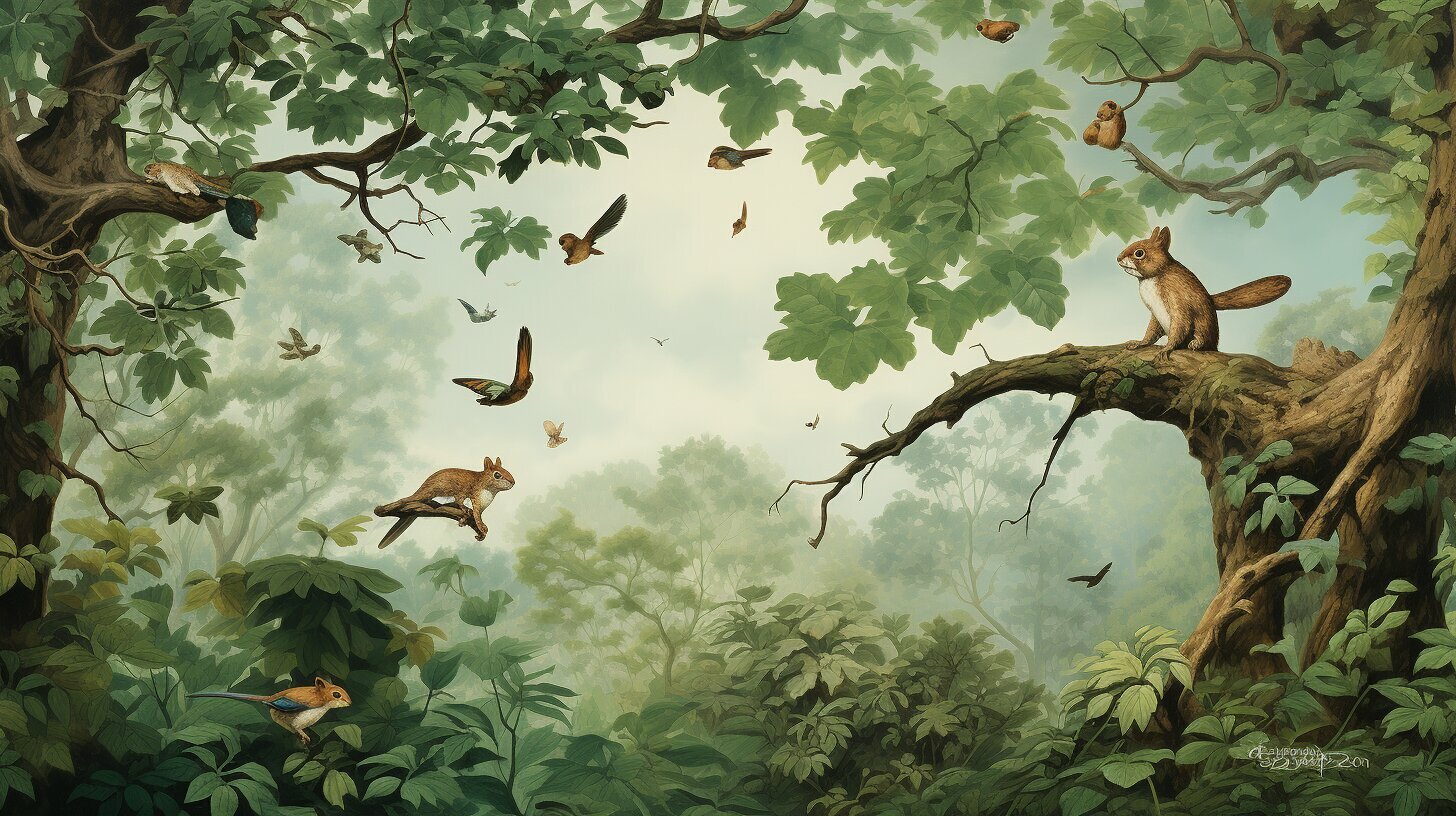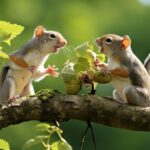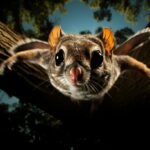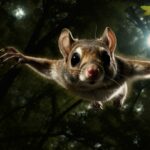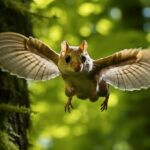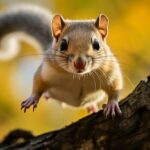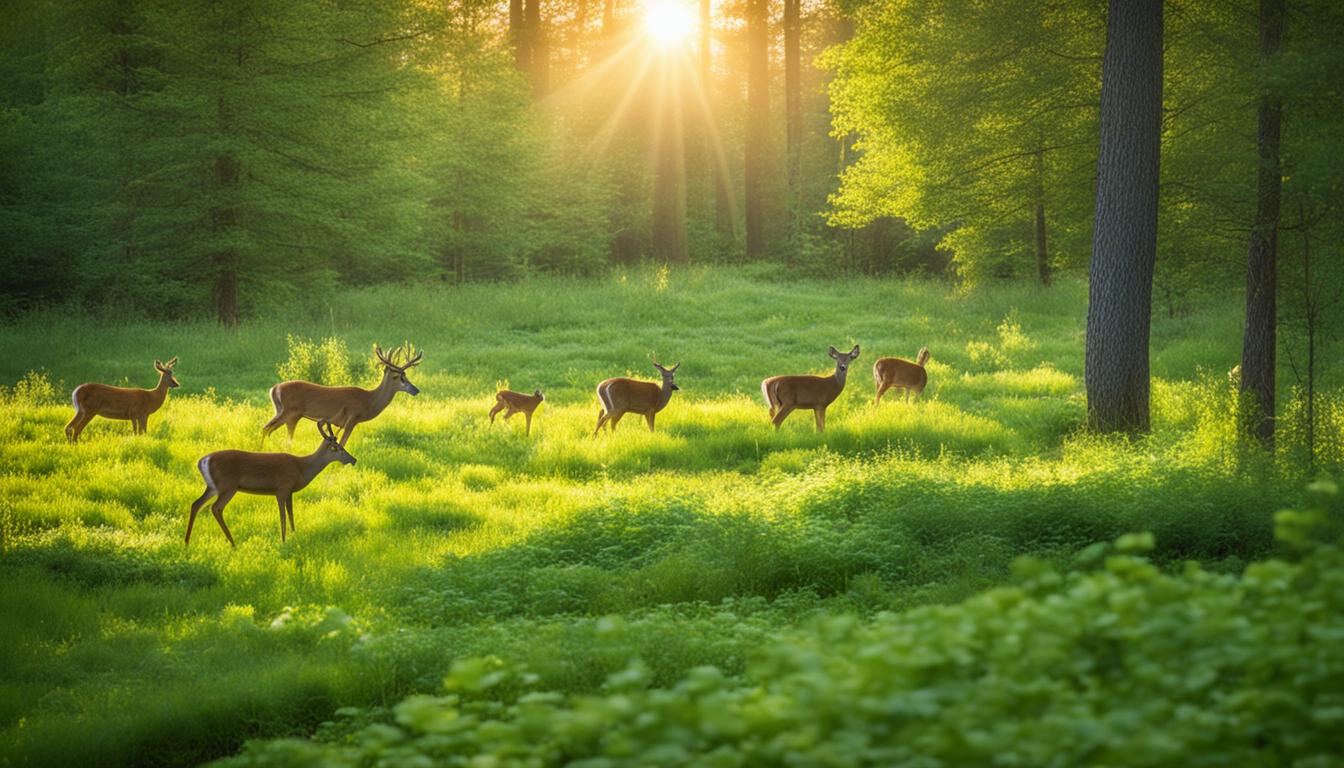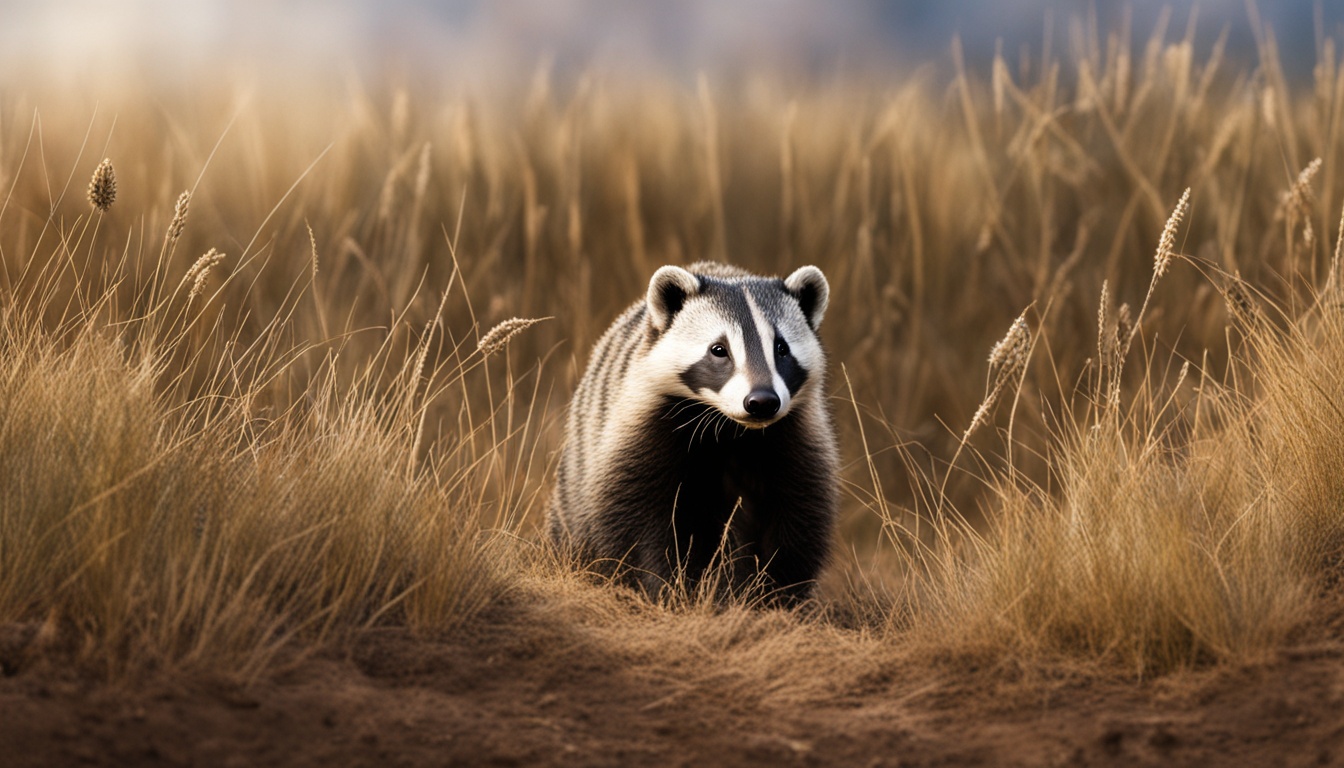Flying squirrels are fascinating animals that require our attention and support to ensure their survival for future generations. Conservation efforts for flying squirrels play a crucial role in protecting these unique creatures, their habitats, and the delicate balance of our ecosystems. In the United States, there are specific initiatives and programs aimed at preserving and restoring the populations of flying squirrels, with a focus on the successful recovery of the West Virginia northern flying squirrel.
Key Takeaways:
- The West Virginia northern flying squirrel has made a remarkable recovery since being listed as an endangered species.
- The Central Appalachian Spruce Restoration Initiative has played a crucial role in protecting the squirrel’s habitat.
- Restoration efforts have helped expand the squirrel’s habitat, particularly in red spruce-northern hardwood forests.
- Hundreds of thousands of acres of habitat have been restored in West Virginia, contributing to the squirrel’s recovery.
- Forest management practices have supported both the squirrel’s recovery and provided economic benefits to rural communities.
The Successful Recovery of the West Virginia Northern Flying Squirrel
The West Virginia northern flying squirrel, once listed as an endangered species, has made a remarkable recovery through dedicated conservation efforts. Thanks to restoration initiatives and habitat protection, this unique subspecies has expanded its habitat and continues to thrive in red spruce-northern hardwood forests.
The Central Appalachian Spruce Restoration Initiative, a partnership of various organizations, has played a crucial role in the restoration and protection of the squirrel’s habitat. Through planting red spruce trees and increasing forest patch sizes and connectivity, the initiative has successfully restored hundreds of thousands of acres of habitat in West Virginia since the squirrel’s delisting.
The Monongahela National Forest in West Virginia has been a key focus area for restoration efforts. Through innovative approaches, degraded mine sites have been restored, and large tracts of red spruce forests have been promoted. Forest management practices have not only supported the recovery of the northern flying squirrel but also provided economic benefits to rural communities.
The Impact of Restoration Efforts in West Virginia
The restoration and protection of the squirrel’s habitat in West Virginia have been instrumental in its recovery. By restoring hundreds of thousands of acres of habitat, the partnership is optimistic about the future of this subspecies. The squirrel remains well-distributed across its core areas and continues to be found at both new and historical sites.
| Habitat Restoration Efforts in West Virginia | Results |
|---|---|
| Planting of red spruce trees | Expansion of suitable habitat |
| Increasing forest patch sizes and connectivity | Improved movement and range for the squirrel |
| Restoration of degraded mine sites | Recovery of red spruce forests |
While the northern flying squirrel’s decline in Pennsylvania can be attributed to various factors, ongoing conservation efforts are focused on protecting older forests and developing guidelines for forest protection near known populations. Monitoring and tracking the population and habitat use of the northern flying squirrel provide valuable insights for conservation strategies and future recovery efforts.
The Role of the Central Appalachian Spruce Restoration Initiative
The Central Appalachian Spruce Restoration Initiative has played a vital role in conservation efforts for flying squirrels by focusing on restoring and protecting their natural habitat. This partnership, composed of various organizations, has implemented a range of programs and projects aimed at enhancing the population and habitat of these unique creatures. By planting red spruce trees and increasing forest patch sizes and connectivity, the initiative has helped to create a more suitable environment for flying squirrels to thrive.
The restoration efforts have yielded positive outcomes, especially for the West Virginia northern flying squirrel, also known as the Virginia northern flying squirrel. Since its listing as an endangered species in 1985, this subspecies has experienced a remarkable recovery. Thanks to the restoration and protection of its habitat, which primarily consists of red spruce-northern hardwood forests, the squirrel has been able to expand its range and is now found at both new and historical sites.
The partnership’s restoration work has been particularly focused on the Monongahela National Forest in West Virginia, where innovative approaches have been used to restore degraded mine sites and promote the growth of large tracts of red spruce forest. These forest management practices have not only supported the recovery of the northern flying squirrel but have also brought economic benefits to rural communities in the region.
While the West Virginia population of the northern flying squirrel has thrived, the species has faced challenges in Pennsylvania. Factors such as habitat loss, competition with other squirrel species, and the decline of hemlock forests have contributed to its decline in the state. Ongoing efforts are being made to monitor and track the population and habitat use of the squirrel in Pennsylvania. These efforts focus on protecting older forests and developing guidelines for forest protection near known populations, with the aim of safeguarding the future of this unique subspecies.
| Conservation Programs for Flying Squirrels: | Wildlife Conservation for Flying Squirrels: |
|---|---|
|
|
Habitat Restoration and Protection Efforts in West Virginia
Conservationists in West Virginia have undertaken significant efforts to protect and restore the habitat of flying squirrels, contributing to the preservation of their populations. The West Virginia northern flying squirrel, also known as the Virginia northern flying squirrel, has seen a successful recovery since being listed as an endangered species in 1985.
Restoration efforts have helped expand its habitat, which consists of red spruce-northern hardwood forests. The Central Appalachian Spruce Restoration Initiative, a partnership of various organizations, has played a crucial role in the restoration and protection of the squirrel’s habitat. Efforts include planting red spruce trees and increasing forest patch sizes and connectivity.
The squirrel remains well-distributed across its core areas and continues to be found at new and historical sites. Habitat restoration and protection efforts have greatly contributed to the squirrel’s recovery, with hundreds of thousands of acres of habitat restored in West Virginia since its delisting in 2013. The partnership is optimistic about the future of this unique subspecies.
The Monongahela National Forest in West Virginia has been a focus of restoration work, with innovative approaches to restore degraded mine sites and promote large tracts of red spruce forest. Forest management practices have helped support the recovery of the northern flying squirrel while providing economic benefits to rural communities.
Habitat Restoration and Protection Efforts in West Virginia: Summary
- Conservationists in West Virginia have made significant efforts to protect and restore the habitat of flying squirrels.
- The West Virginia northern flying squirrel has successfully recovered since being listed as an endangered species.
- The Central Appalachian Spruce Restoration Initiative has played a crucial role in restoring and protecting the squirrel’s habitat.
- Hundreds of thousands of acres of habitat have been restored in West Virginia, contributing to the squirrel’s recovery.
- Forest management practices have supported the squirrel’s recovery while benefiting local communities.
| Species: | Flying Squirrel |
|---|---|
| Location: | West Virginia |
| Conservation Efforts: | Habitat restoration, protection, and expansion |
| Result: | Successful recovery of populations |
The Impact of Forest Management Practices
Forest management practices have played a crucial role in supporting the recovery of the northern flying squirrel population, benefiting both the species and local communities. Restoration efforts in the red spruce-northern hardwood forests of West Virginia have focused on increasing forest patch sizes and connectivity, which has expanded the habitat available for these unique creatures. The success of these efforts can be attributed to the partnership of various organizations, including the Central Appalachian Spruce Restoration Initiative.
Through planting red spruce trees and restoring degraded mine sites, hundreds of thousands of acres of habitat have been restored in West Virginia since the squirrel’s delisting in 2013. The Monongahela National Forest has been a key area for restoration work, promoting the growth of large tracts of red spruce forest. These efforts have not only supported the recovery of the northern flying squirrel but have also provided economic benefits to rural communities.
The positive impact of forest management practices extends beyond West Virginia. In Pennsylvania, where the squirrel’s decline can be attributed to habitat loss and competition with the southern flying squirrel, ongoing efforts are focused on monitoring and tracking the population and habitat use of the northern flying squirrel. Guidelines for forest protection near known populations are being developed, with an emphasis on protecting older forests. This approach aims to ensure the preservation of suitable habitat and promote the recovery of the species in Pennsylvania.
| Benefit of Forest Management Practices: | Impact: |
|---|---|
| Promotes habitat expansion | Increases available habitat for the northern flying squirrel |
| Restores degraded mine sites | Reclaims previously unusable land for squirrel habitat |
| Supports economic benefits | Provides opportunities for rural communities |
| Guidelines for forest protection | Ensures the preservation of suitable habitat in Pennsylvania |
The recovery of the northern flying squirrel population is a testament to the effectiveness of sustainable forest management practices. By taking proactive measures to restore and protect their habitat, we can ensure the preservation of these fascinating creatures for future generations.
Challenges and Ongoing Conservation Efforts in Pennsylvania
Pennsylvania’s flying squirrel populations face various challenges, but dedicated conservation efforts aim to protect and preserve these unique creatures. Habitat loss, competition with the more numerous southern flying squirrel, and declining health of hemlock forests have contributed to the decline of the northern flying squirrel in this state. However, ongoing efforts are being made to address these challenges and ensure the survival of this endangered species.
The first step in protecting the northern flying squirrel in Pennsylvania is to monitor and track its population and habitat use. Conservation organizations and researchers are conducting extensive surveys and studies to gather data on the squirrel’s distribution, population trends, and habitat requirements. By understanding the specific needs of these squirrels, conservationists can develop targeted strategies for their protection.
- Protecting Older Forests: The preservation of older forests is crucial for the northern flying squirrel’s survival. These forests provide the right mix of tree species and mature habitat necessary for the squirrels to thrive. Conservation initiatives focus on identifying and protecting older forests that serve as key habitats for the squirrel populations.
- Developing Forest Protection Guidelines: To ensure the long-term conservation of the northern flying squirrel, guidelines are being developed for forest protection near known populations. These guidelines will help landowners, forestry agencies, and developers understand the importance of maintaining suitable habitat and implement measures to minimize disturbances that may harm the squirrels.
Conservation efforts in Pennsylvania also involve promoting public awareness and education about the importance of preserving flying squirrel populations. By informing the public about the ecological significance of these creatures and their role in maintaining forest health, it is hoped that more people will actively support conservation initiatives and engage in sustainable practices that protect the squirrels and their habitat.
In conclusion, while the northern flying squirrel populations in Pennsylvania face challenges, concerted conservation efforts are underway to safeguard their future. Through monitoring, habitat protection, and public awareness campaigns, Pennsylvania is striving to ensure the preservation of these unique creatures for generations to come.
Conclusion
Conservation efforts for flying squirrels are vital to secure their future and require ongoing support and dedication from individuals and organizations alike. The successful recovery of the West Virginia northern flying squirrel, also known as the Virginia northern flying squirrel, is a testament to the impact that restoration and protection initiatives can have on endangered species.
Thanks to restoration efforts, the habitat of the West Virginia northern flying squirrel has expanded, primarily in red spruce-northern hardwood forests. The Central Appalachian Spruce Restoration Initiative, a partnership of various organizations, has played a crucial role in restoring and protecting the squirrel’s habitat. Through planting red spruce trees and increasing forest patch sizes and connectivity, the initiative has contributed significantly to the squirrel’s recovery, leading to its delisting in 2013.
Hundreds of thousands of acres of habitat have been restored in West Virginia, particularly in the Monongahela National Forest, where innovative approaches have been employed to restore degraded mine sites and promote large tracts of red spruce forest. Forest management practices have not only supported the recovery of the northern flying squirrel but also provided economic benefits to rural communities.
In Pennsylvania, ongoing efforts focus on monitoring and tracking the population and habitat use of the northern flying squirrel. This subspecies faces challenges such as habitat loss, competition with the more numerous southern flying squirrel, and declining health of hemlock forests. Protecting older forests and developing guidelines for forest protection near known populations are important steps towards safeguarding the squirrel’s future in the state.
By continuing to invest in conservation programs, preserve habitat, and implement sustainable practices, we can ensure that future generations will have the opportunity to marvel at the unique beauty of flying squirrels and appreciate the vital role they play in our ecosystems.
What Are the Different Flying Squirrel Species Found in the US?
The United States boasts a rich diversity of flying squirrel species. Among them are the northern flying squirrel and southern flying squirrel, two common ones found across the country. The Virginia northern flying squirrel, recognized as an endangered species, is endemic to the state. These diverse flying squirrel species play vital roles in ecosystems, contributing to seed dispersion and serving as prey for predators.
FAQ
Q: What is the current status of the West Virginia northern flying squirrel?
A: The West Virginia northern flying squirrel has made a successful recovery since being listed as an endangered species in 1985. Restoration efforts have expanded its habitat and the squirrel is now well-distributed across its core areas.
Q: What organizations are involved in the restoration and protection of the squirrel’s habitat?
A: The Central Appalachian Spruce Restoration Initiative, a partnership of various organizations, has played a crucial role in the restoration and protection of the West Virginia northern flying squirrel’s habitat.
Q: What has been done to restore the squirrel’s habitat in West Virginia?
A: Habitat restoration efforts in West Virginia have included planting red spruce trees, increasing forest patch sizes and connectivity, and restoring hundreds of thousands of acres of habitat since the squirrel’s delisting in 2013.
Q: How have forest management practices contributed to the recovery of the northern flying squirrel?
A: Forest management practices in the Monongahela National Forest, West Virginia, have helped support the recovery of the northern flying squirrel while providing economic benefits to rural communities.
Q: What are the challenges faced by flying squirrels in Pennsylvania?
A: The decline of flying squirrels in Pennsylvania can be attributed to habitat loss, competition with the more numerous southern flying squirrel, and declining health of hemlock forests.
Q: What ongoing conservation efforts are being made in Pennsylvania?
A: Ongoing efforts in Pennsylvania focus on monitoring and tracking the population and habitat use of the northern flying squirrel, protecting older forests, and developing guidelines for forest protection near known populations.

